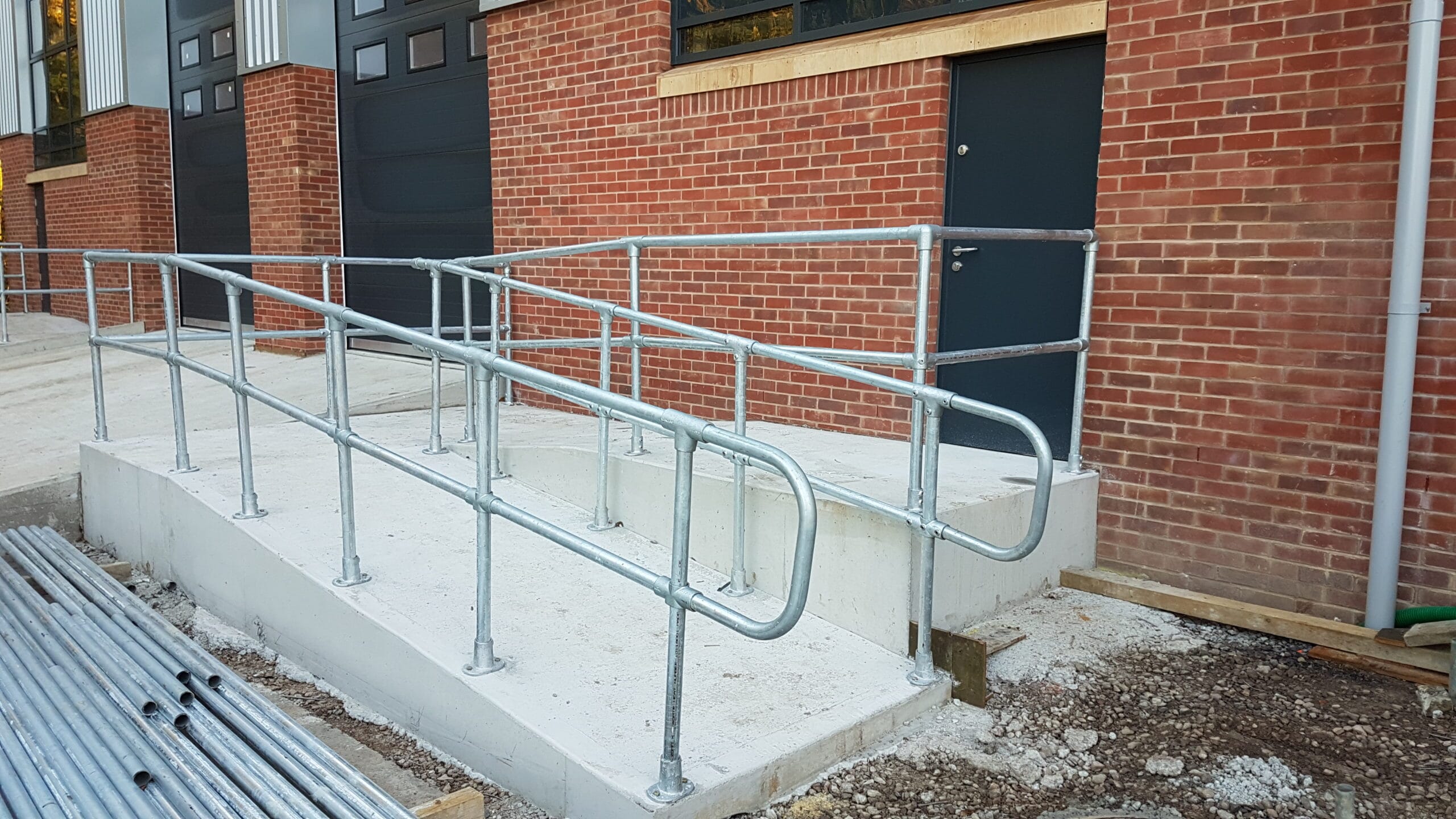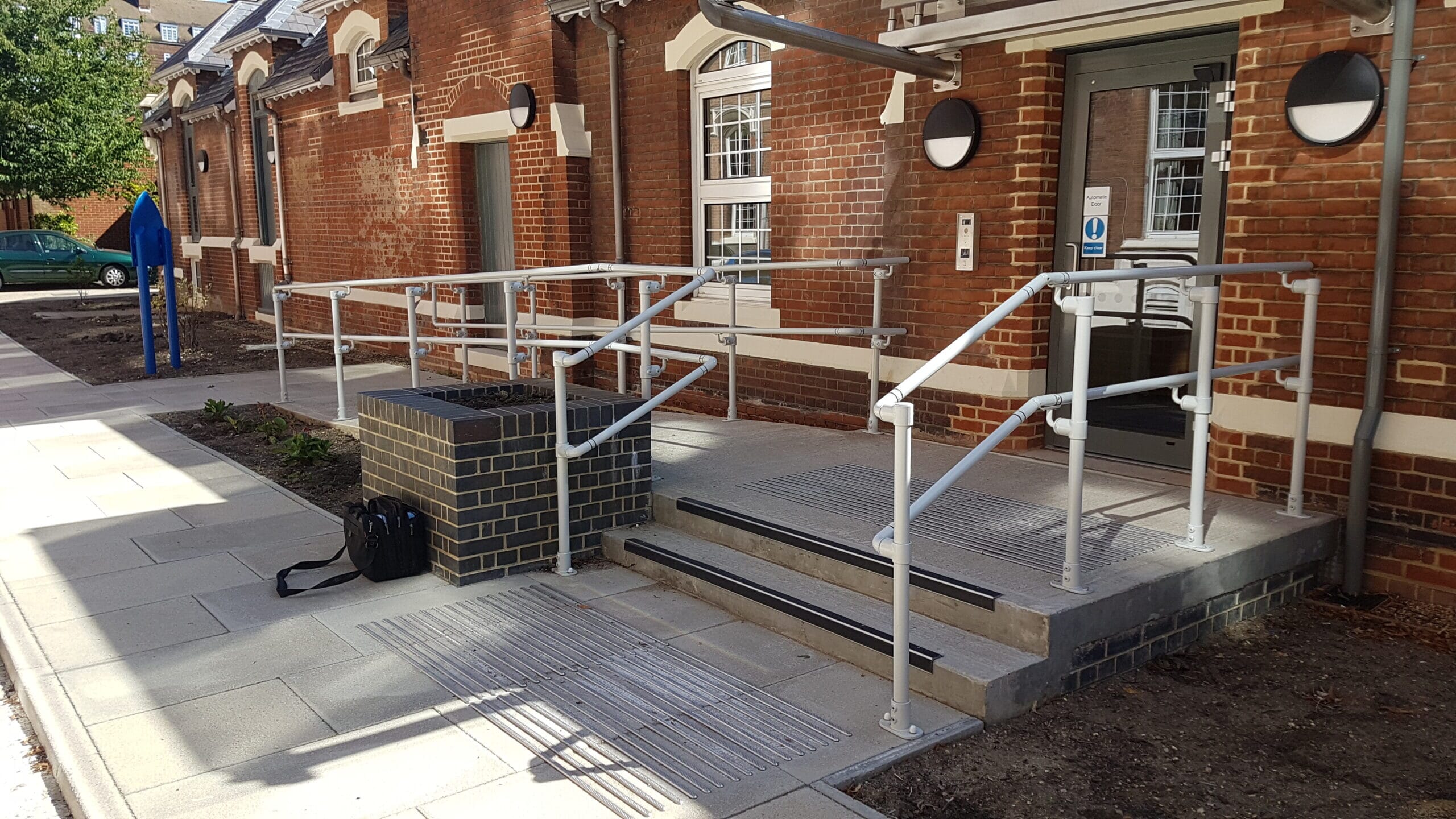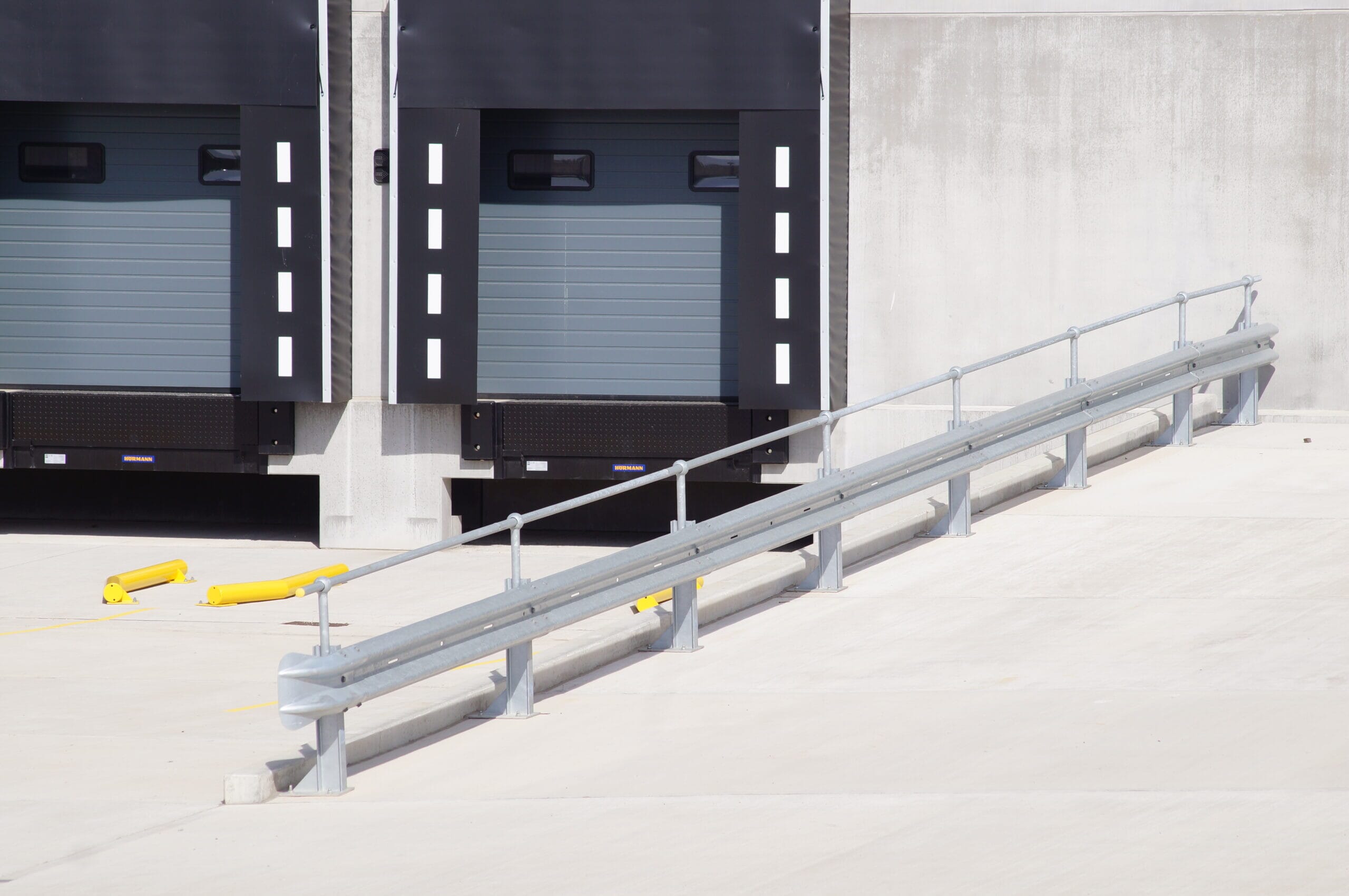GRP Fencing: A Buyer’s Guide

Whether it’s to keep items in or people out, a GRP (glass reinforced plastic) fence gives you security, privacy, safety and practicality in one lightweight, easily-assembled fencing package.
As a material, GRP is non-conductive, durable and versatile; it easily moulds and can be manufactured into lots of different fencing styles, from mesh GRP fences and vertical bar GRP fencing to public space GRP fence panels.
It’s also known for its ease of maintenance and its corrosion and rust-resistant properties, making it a smart and risk-free alternative to metal palisade fencing for industrial and commercial projects.

What is Glass Reinforced Plastic?
Glass‐Reinforced Plastic (GRP), is a composite material made of plastic reinforced by fine glass fibres. In the industry, we call the material GRP, but many people refer to it by its common name, fibreglass.
GRP is both strong and light (50% lighter than most steel equivalents), has good thermal insulation properties, and is self-coloured, so requires no painting or ongoing maintenance.
Due to these qualities and more, GRP is typically used for a furniture, cars, swimming pools, septic tanks, small boat hulls and even surfboards.

The advantages of Glass Reinforced Plastic (GRP) Fencing
Fencing can be made from many different materials, such as timber and steel. Both of these have their own unique advantages for fencing solutions but GRP fencing possesses qualities that rise above where timber and steel fail.
Fences, particularly palisade fences, need to be designed to last. They are created to be permanent fixtures, constantly guarding an area to keep it secure. As such, palisade fences must live up to a lot of punishment and still provide protection to whatever they are guarding.
GRP fencing is not only light but it requires less maintenance, making it highly attractive over more traditional materials like timber, metal or brick that need to be maintained over time against the environment.
GRP fencing is also highly tolerant in the most aggressive of environments: it can resist chloride ion attacks and withstand harsh conditions, such as coastal settings or places with increased UV exposure. So you won’t have to pay out large sums of money further down the line to replace weather-damaged GRP panels, posts, or gates or purchase materials to keep your GRP fencing maintained.
What’s more, GRP fencing’s tensile strength is equal to or greater than equivalent steel profiles. Even though it’s lightweight, GRP fencing offers impressive performance due to the strength of its composition. It can resist sudden and severe point impact and avoid permanent distortion. And if a GRP fence is mildly damaged or deformed, it can return to its original shape without workers having to face the cost of repairs or replacements.
GRP can be easily fabricated and cut on-site to accommodate precise fencing specifications and complex layouts. For this reason, GRP fencing can be stylised to the precise needs of your project or an individual layout of a site.
All-in-all GRP fencing is by far a more cost-effective solution for your commercial and industrial needs in the long-term.

When should you use Glass Reinforced Plastic (GRP) Fencing?
GRP fencing is a long-term solution that can add peace of mind to any site that needs increased security. It is specifically designed to ward off possible threats to a company’s well-being and can be fully utilised to last (with the long-life, maintenance-free qualities of GRP) on railway and trackside applications, water treatment works, chemical works and high voltage risk areas.
- For electrically hazardous sites: The qualities of GRP also make it effective to use as fencing on sites with hazards or risks. For instance, thanks to its non-conductive properties, GRP is suitable for electrically hazardous sites. As GRP is a thermal insulator, it can’t be affected by electromagnetic fields or radio waves.
- For sites where combustible gases are present: The non-sparking qualities of GRP also make it a suitable fencing solution for locations where combustible gases may be present. For tricky installations, this also lowers the chance of short-term and long-term damage to materials and personnel. It also means contractors can specify GRP fencing for more testing environments.
- For sites with valuable substances and equipment: GRP palisade fencing is particularly useful for security purposes, especially on sites containing valuable substances or equipment that when tampered with can lead to injury, fatalities or huge expenses.
One of the most distinctive features of GRP palisade fencing is the top finish. Usually, the vertical joists will feature a point, sometimes even a triple point. This makes them almost impossible to climb without injury. What’s more, thanks to the corrosion resistance properties of GRP fencing, these points won’t lose their impact and the material won’t weaken—meaning its ability to resist threats isn’t temporary.
Other finishes on GRP palisade fencing can be square or rounded and, although not as ‘dangerous’ as the pointed tips, they still provide an excellent deterrent to intruders as well as giving a site a touch of the aesthetic.
How is GRP fencing installed?
GRP fencing can be installed on-site by workers by following the guidelines laid out by the manufacturer and observing safe practice.
Given that GRP fencing is lighter and more manoeuvrable than steel, it requires less physical strain. This can reduce the need for heavy machinery on-site and an increased labour force, saving you time and money. In turn, this reduces the damage to the site caused by increased foot and vehicle traffic, which means you can get back to normal faster when it’s done!
Dependent on the ground of the site, one of the following styles of dig will be required to insert GRP fencing at floor level:
- Soft Dig – erecting GRP palisade fencing on soil or grass. This is normally cheaper as it is less labour intensive and requires less specialist tooling to install the fence.
- Hard Dig – erecting GRP palisade fencing on concrete or tarmac. Due to the difficulties with breaking the hard ground for installing GRP palisade fencing posts, this type of ground is more expensive to erect fencing on.

A typical GRP palisade fencing installation process
- A survey of the ground conditions must be carried out in advance to ensure conditions will support all GRP fencing posts. If conditions are too wet or insufficiently compacted please consult a groundworks engineer for assistance.
- Use string line and pegs to mark out on the ground the line where the fence will go.
- Based on the width of the rails, mark the positions of the fence posts. If installing a gate, start with the gate post and expand out towards the first corner or end.
- Using the appropriate equipment, and observing the correct health and safety procedures, dig the holes to the required depth, to accommodate the GRP fence posts provided. If using base plates screwed onto concrete instead of post holes, ensure that the surface is thick enough to accommodate fixing screws and level enough to allow the post to be fixed vertically.
- Insert the first GRP post into the dug hole and use a spirit level to ensure that it stands vertically.
- Add the mixed concrete to the hole around the positioned GRP fence post. Ensure the post is fixed in an upright position whilst drying.
- Dig the next post hole. Don’t install all the posts at the same time. Do one GRP post and panel at a time. It’s way harder to fix one mistake if they’re all in.
- Secure the 90 degree fish plate brackets
- Secure the rails to the link plates fixings.
- Fix the pales on to the rails using fixings.
- Make sure that all fixings are fully tightened and secure.
- If the fencing is required to be stepped to accommodate a gradient, please ensure that the post heights are set correctly to accommodate the drop required.
- Treat all resulting scuffs, marks and cut surfaces with touch up paint.
If, however, you or your team are unsure how to install GRP palisade fencing, our Ezi Klamp operatives have CSCS accreditations and can assist with any queries about installation or the product itself.

Where to buy GRP palisade fencing
Buying GRP palisade fencing should not be a one-size-fits-all transaction. Every site has its own requirements, so before you make an investment ensure you get expert advice from a specialist GRP fencing supplier or a GRP fencing manufacturer.
Ezi Klamp is a GRP fencing supplier with many successful installations under our belt. As such, we offer a bespoke GRP fencing service to fulfil your needs and ensure the end result is exactly how you want it. We also supply standard heights and widths of GRP palisade fencing for more straight-forward installations and projects.
Should you wish to ease the installation of GRP fencing and reduce your downtime, we also offer pre-site assembly services. Like you, we want to make sure long-term security for your project starts sooner rather than later.
Of course, should you need any more detailed, bespoke advice on GRP fencing, including application case study examples, or you’d like to find out about other GRP solutions (including GRP tubes and handrails) simply call or email our GRP fencing experts who’ll be very happy to help.
Contact us today to discuss your specifications on 0117 970 2420 or email sales@eziklampsystems.com.








